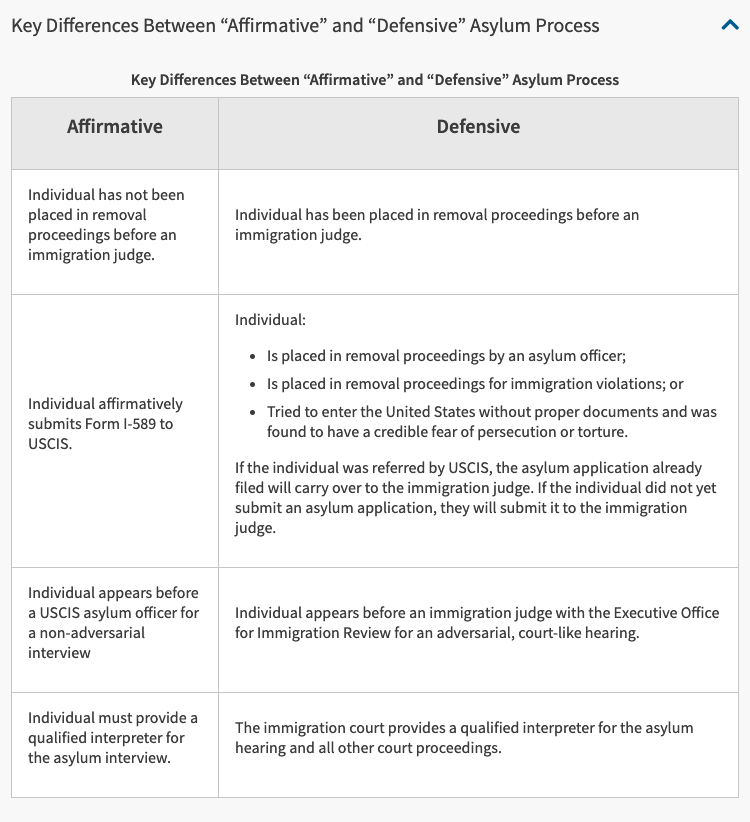Asylum
What is Asylum?
Asylum is a protection granted to foreign nationals already in the United States or
arriving at the border who meet the international law definition of a “refugee.”
The United Nations 1951 Convention and 1967 Protocol define a refugee as a
person who is unable or unwilling to return to his or her home country, and cannot
obtain protection in that country, due to past persecution or a well-founded fear of
being persecuted in the future “on account of race, religion, nationality,
membership in a particular social group, or political opinion.” Congress
incorporated this definition into U.S. immigration law in the Refugee Act of 1980.
Who is eligible?
Asylum law is very complex. An individual generally must apply for asylum within one year of their most recent arrival in the United States.
CLICK HERE
There are two primary ways in which a person may apply for asylum in the United States: the affirmative process and the defensive process.
- Affirmative Asylum: A person who is not in removal proceedings may affirmatively apply for asylum through U.S. Citizenship and Immigration Services (USCIS). If the USCIS asylum officer does not grant the asylum application and the applicant does not have a lawful immigration status, he or she is referred to the immigration court for removal proceedings, where he or she may renew the request for asylum through the defensive process and appear before an immigration judge.
- Defensive Asylum: A person who is in removal proceedings may apply for asylum defensively by filing the application with an immigration judge at the Executive Office for Immigration Review (EOIR) in the Department of Justice.
An asylum seeker has the burden of proving that he or she meets the definition of a refugee. Asylum seekers often provide substantial evidence throughout the affirmative and defensive processes demonstrating either past persecution or that they have a “well-founded fear” of future persecution in their home country.



